Farm Rescue Options - Harvest Is Coming
The following farm rescue options were learned and passed on to a group of about 70 firefighters in Wakeman, Ohio at the 2nd Annual Farm Rescue course hosted by the Northern Ohio Fools & the Ehove Fire Academy.
Station 1 - Grain Tube Rescue & Hauling Systems
In the event of a farm accident involving grain, it will be beneficial to know how to use and where to get a grain tube. This tube will help facilitate a successful rescue of the victim trapped. For this training a simulated victim was tethered off and partially buried in a semi-trailer full of corn.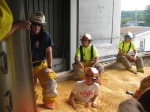
The grain tube is assembled and then placed overtop of the victim. A pneumatic vacuum or manual means to remove the grain from around the victim is needed.
As the material is removed the grain tube is pushed down further to protect the victim.
Also, at this station the firefighters reviewed knots, tether lines, anchors, and hauling/lowering systems.
If this scenario was in a grain bin, rope rescue systems (3:1, 4:1, etc.) would be needed. It is imperative that rescuers be properly tethered in high-angle environments.
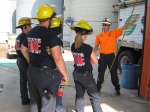
Station 2 - Anhydrous Ammonia Leak Containment
Many of us have learned about anhydrous ammonia incidents in fire school or hazardous materials classes, but few deal with them regularly. Here's a quick review.
▪ Firefighters should be in full PPE, including SCBA
▪ 2 handlines on a fog pattern should be used to approach the leaking tank or implement from the upwind side
▪ A firefighter, protected by the hoselines should quickly shut off the supply valve on the tank
▪ All personnel back away from the area and wait for the anhydrous ammonia to dissipate
Station 3 - Corn Header & Haybine Extrication
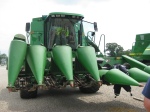 If someone becomes caught or pinned in a corn header the machine needs turned off. Cribbing should be put in place to prevent the gears from traveling further on the header. One of the fastest techniques to free the victim is to use the hydraulic spreaders.
If someone becomes caught or pinned in a corn header the machine needs turned off. Cribbing should be put in place to prevent the gears from traveling further on the header. One of the fastest techniques to free the victim is to use the hydraulic spreaders.
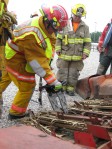
Wakeman (OH) firefighters responded to a victim trapped in a haybine 2 years ago and have brought a wealth of knowledge about this scenario. Haybines have tines that pull the grass into the machine and two rollers that squeeze the grass prior to bailing.
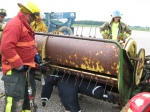
They learned that the extrication should take place from the outside of the machine. Not under, on top of, or inside any part of the machine. The best method found is to cut the spring tension for the rollers and then use hydraulic spreaders to lift the top roller upward from the side where the gears are located.
You will need to cut away some sheet metal and place the bottom tip of the spreader on the lower framework of the haybine or build a box crib on the ground. The top tip of the spreader will come into contact with the top roller. A gap large enough to free the pinned victim will be created.
Pass it on!
Specialty Websites
Find Members Fast
Firefighting Videos
© 2026 Created by Firefighter Nation WebChief.
Powered by
![]()
Badges | Contact Firefighter Nation | Privacy Policy | Terms of Service
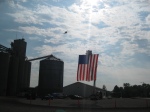

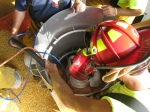
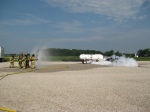
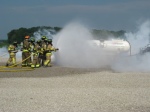

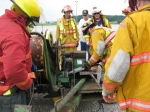
You need to be a member of My Firefighter Nation to add comments!
Join My Firefighter Nation